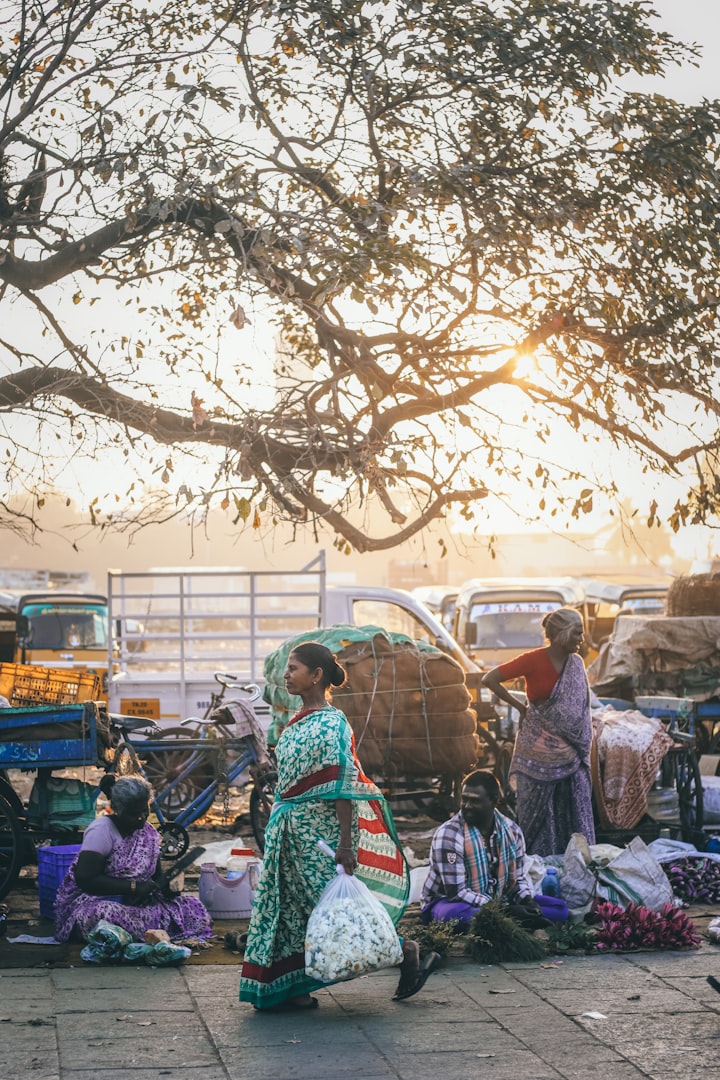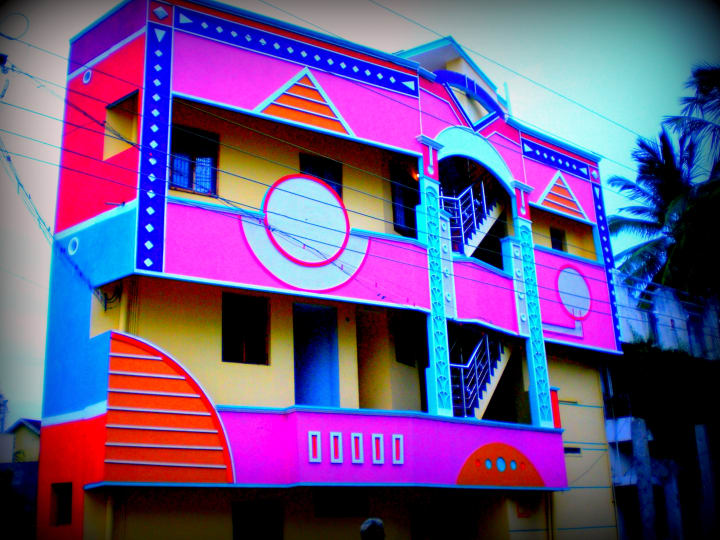How Our Personal Biases Color the Landscape We Actually See
And how prevalent they are despite our best efforts

The Beginning Journey
Circumstances and serendipity had transported me to India. Over six years, I took four trips.
The first was a soul-searching quest. Like countless seekers before me, I journeyed to the land of realized saints, rishis, monks, wandering sadhus, and enlightened gurus.
For all the clichéd reasons: To find a more meaningful existence. To find God. To find answers.
Travel Rules
In preparation, I imposed numerous self-rules.
1. Experience the country with awe and wonderment as if through the eyes of a child. Embrace India’s culture. (With decades of entrenched behaviors and biases, this proved the most challenging).
2. Do not interject your holier-than-thou-superiority attitude about how advanced the West is. (No one appreciates comments of this nature).
3. Try not to whine and complain incessantly like an obnoxious foreigner. If you can’t stand the heat, get out of the kitchen. (I frequently failed miserably).
4. Be kind, gracious, flexible, and maintain a sense of humor. (That’s wise counsel when traveling anywhere).
They were my operational mantras. They were necessary. They were repeated frequently.
The Realities
When visiting any culture vastly different from one’s native home, maintaining an open flexible mindset is beneficial for many reasons.
I was prepared for the many negative aspects of how naysayers and the media often portrayed India.
Or so I thought.
An undeniable gritty aspect of India exists. It is inescapable; it is in your face every day.
Gripping poverty. Dirty, grimy streets. Overpowering olfactory assaults. Incessant air and noise pollution. Staggering illiteracy rates. Heart-wrenching maimed and beggars lining sidewalks. Exuberant children on the streets instead of in school. Intense rush hour traffic 24/7. Crushingly overpopulated cities.
India’s soul, though, is deeply embedded in its cultural legacies, its endemic centuries of spirituality, and its myriad layered traditions. I reveled in her storied history, soaking up experiences, good and bad, with enthusiasm.
Traveling solo as the spirit moved me and circumstances directed, with no schedule or itinerary, I was seeing and experiencing the real India.
The one amidst the mire and poverty. The one not portrayed in glossy tour company brochures.
Or so I thought.
Human Connection
I fell in love with Mother India, particularly her endearing, generous people.
The life-altering enchantment of travel — contrasted with tourism and sightseeing — abounds from interactions with a country’s people.
Those defining connections enrich and impact our lives, often in unfathomable ways that mutate for years afterward.
I enjoyed fascinating discussions about spirituality, Vedic philosophy, and personal values. I lost count of how many Indians refreshingly remarked, “There are far more important things in life than money.”
These chats were with Buddhists, Sikhs, Muslims, Christians, and Hindus, and with a broad spectrum of folks, educated and not. Shopkeepers, passengers on trains, business owners, scientists, and restaurateurs.
Interestingly, I rarely engaged them. Instead, conversations were initiated by Indians themselves.
I can assure you I’ve not had similar philosophical discussions with any random strangers in the United States.
The Searing South
My first trip began in South India in the state of Tamil Nadu.
I soon discovered — haha — that only fools travel to the South in summer. All visitors and locals who could afford it had returned home or escaped to the cooler hill country.
However, I was from Arizona — the land of endless summer and heat waves exceeding 110°F for fifty consecutive days. This tough, seasoned desert rat was unafraid of the tales of month after month of scorching days and suffocating nights.
Quickly, I discovered that summers vary substantially. In India, I walked everywhere for hours in mid-day, 100-degree F heat. Whereas in the States, I rushed from my air-conditioned car to an air-conditioned business and back to an air-conditioned home or office.
Nevertheless, I survived two-and-a-half months of South India’s stifling heat, frequent non-existent air conditioning, and daily power outages.
And, indeed, despite my avowed affirmations, I engaged in a goodly share of Western whining, moaning, and groaning.
India provides its visitors with numerous gifts, whether we seek them out or not.
Most drill profound lessons about humility, patience, flexibility, and kindness. If I hadn’t fully come to appreciate the tests by week ten, plenty lay ahead in the remaining ones.
Getting to Know India
Over time, I rolled with the punches, flowed with the breezes, and gained much wisdom from India, The Universal Teacher of Much in Life.
After two-and-a-half months, I adored India and believed I had embraced with aplomb the magical uniqueness of the paradoxical insanely chaotic, yet mesmerizingly peaceful place. I reveled in the craziness, the unpredictable, and always her people.
I stayed in ashrams and hotels, cruised the backwaters of Kerala, and traveled in taxis, oxcarts, trains, buses, planes, and rickshaws.
I had survived and thrived — a middle-aged single woman — and was quite pleased with myself. The proud wearer of the “Back-Patting Extraordinaire for How Much I Knew and Appreciated India” badge was I.
Rishikesh in the North
My India foray was a personal spiritual quest, following whatever presented itself to me.
I had no preconceived plans except to find the nadi readers in South India and, of course, to see the Taj Mahal.
Everything else was fluid. I had no advance reservations and no pre-purchased train, bus, or plane tickets. It was a magical way to first experience India — on the fly and by the seat of one’s pants.
Circumstances had directed me next to the North and ultimately to Rishikesh. I sought out the city because the revered saint Sivananda lived and found enlightenment there.
One had to be accepted and recommended to stay at the Sivananda ashram. Unlike many ‘tourist-driven’ ashrams, it is an authentic monastery with devotees from around the world.
Situated on the sacred Ganges River, the city of 300,000 is tucked at the base of the foothills of the Himalayas.
A renowned spiritual and pilgrimage site, much of the town is vegetarian, and its reputation for enlightened saints and sadhus migration is legendary.
Solo Travel
There are enormous benefits to traveling alone. I could forge my own itinerary, stay somewhere as long as I wanted, and sleep late. When with a companion, those freedoms are limited.
Of particular joy was meeting and chatting with fellow solo travelers. Those conversations have proven some of my fondest memories, and I remain friends with people met on the road.
Travel Agency Steps Conversation
One gloriously sunny afternoon, a Mexican woman, traveling with another friend who wasn’t present, was sitting on the steps of a travel agency smoking a cigarette. I had just exited the office, and we began to chat.
It was an interesting conversation; she was from a famous acting family in Mexico. Both parents were well-known, long-established actors, and she was also an actress.
I lived at the time in Arizona, a state bordering Mexico. Having made numerous trips south of the border over three decades, I was familiar with a bit of her country. As we gabbed, I commented how India reminded me of Mexico.
She agreed, replying something to the effect of, “Oh, yes, the vibrant colors, the spicy food, the lovely weather, and the lively music.”
All her comparisons focused on the positive and beautiful.
I, on the other hand, had been thinking about the dirt and grime, the unpaved, potholed roads, the garbage strewn on the streets or burned in mounds, and the staggering poverty.
I mumbled something in agreement but was deeply embarrassed.
My epiphany: You believe you view India with the wonderment of a child. Are you? If your focus is on the negatives, I think not.
My mindset still filtered the country through its Western judgmental lens.
It was a defining moment to reexamine my own realities and biases when traveling, especially to underdeveloped nations.
If you change the way you look at things, the things you look at change.
— Wayne Dyer

This is the kind of vibrancy of India I ought to have focused upon. A home in Tiruvannamalai in South India.
Thanks for reading🙏
Victoria
© Victoria Kjos. All Rights Reserved. 2024.
About the Creator
Victoria Kjos
I love thinking. I respect thinking. I respect thinkers. Writing, for me, is thinking on paper. I shall think here. My meanderings as a vagabond, seeker, and lifelong student. I'm deeply honored if you choose to read any of those thoughts.
Reader insights
Nice work
Very well written. Keep up the good work!
Top insight
Easy to read and follow
Well-structured & engaging content






Comments (2)
Victoria Kjos is not accepting comments at the moment
Want to show your support? Send them a one-off tip.